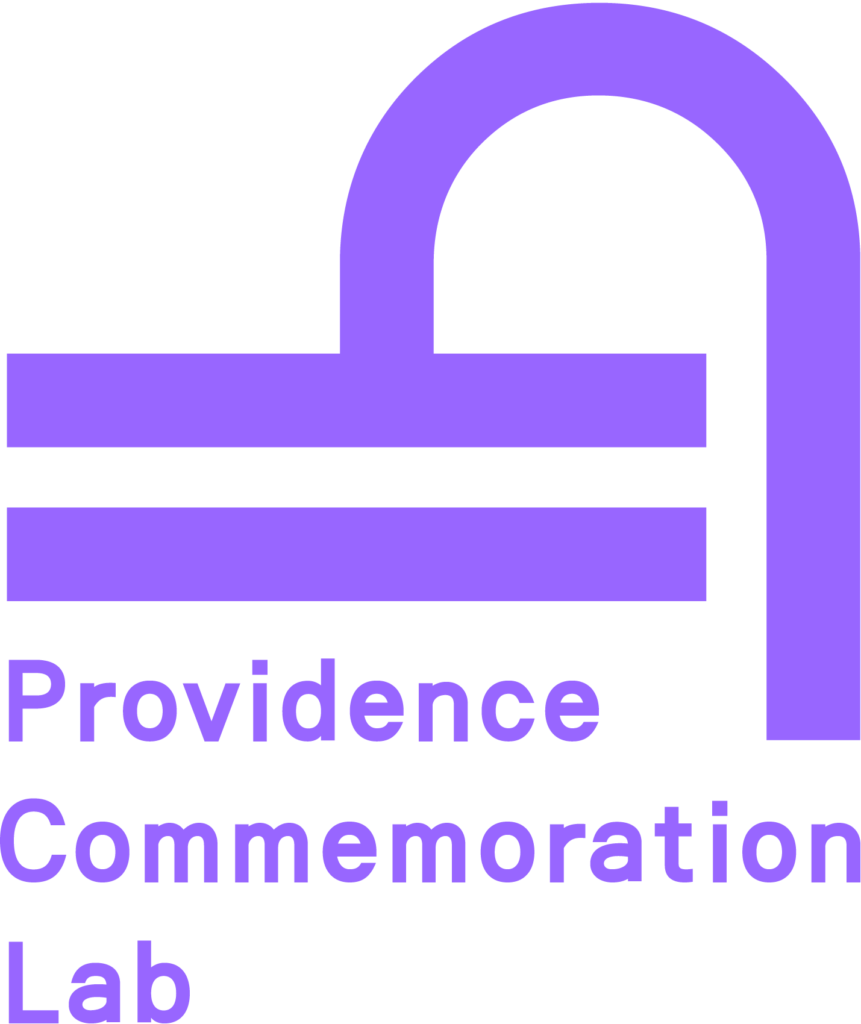Artist Spotlight: Linsey Wallace | Roger Williams Park
PCL artist Linsey Wallace recently sat down with Studio Loba to talk about her practice, her community interventions and performances at Roger Williams Park, her final installation and more. Read on to know more.
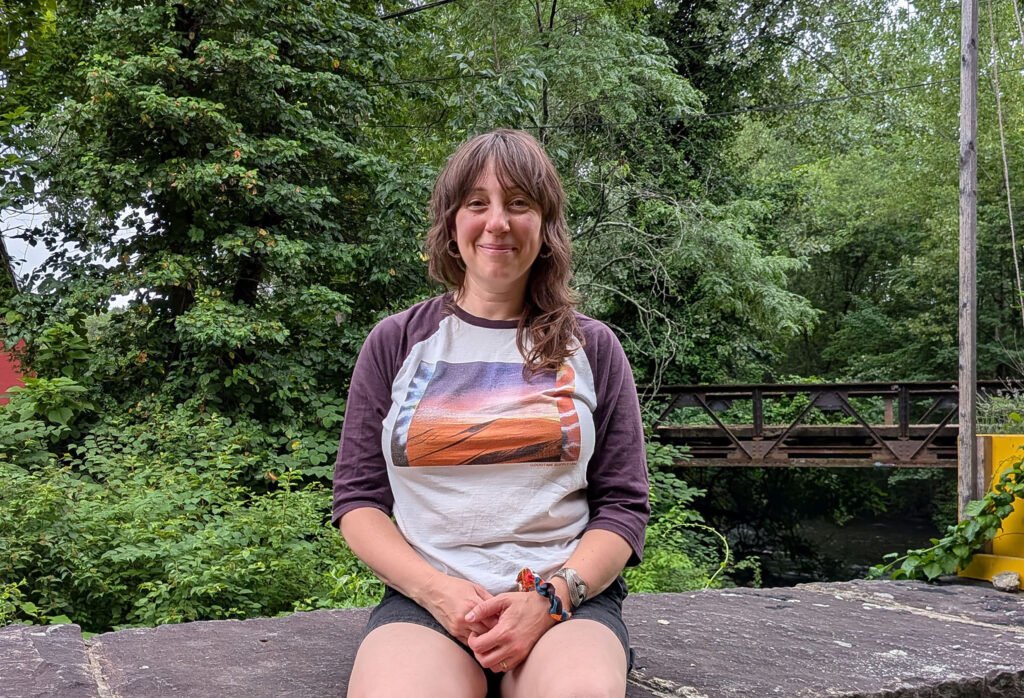
Tell us about your creative practice.
It’s based on ideas. I have certain materials that I like working with, but it depends on what’s driving the project. For the Commemoration Lab, this project is so personal, because I’m calling upon personal memories while also trying to relate to an environment that is disparaged in a lot of ways. So there’s a lot of weight in needing to approach this work and I wasn’t really sure how I was going to do it. The most natural thing turned out to be performance work. Because it’s so closely related to lived experience, that was the easiest way for me to connect. Having conversations with people, and putting my body into it made it feel more real and more relatable.
What role does community play in your work?
My desire is to have a communal experience all the time. I grew up in an extended family where my Vavó’s house was across the street from the house that my brother and I lived in with our parents. My Vavó had seven children, so I had lots of aunts and uncles and cousins present all the time. There was individuality, but you had to consider the group. For example, there was always a pot of soup, like a big, giant pot of soup, and it was able to feed a lot of people, because Vavó wanted to make sure that there was enough to support everybody. So I think I started out with a pretty communal baseline. There are so many problems in the world, and I think the only way that we’re going to overcome them is through working together. So there is a social practice vein in a lot of what I do. I think we need to come together, and how we can relate to each other is based on communication. That’s what art is — it’s learning to communicate your own feelings and relate to other people. So I feel creative expression and community are totally related.
There is a social practice vein in a lot of what I do. I think we need to come together, and how we can relate to each other is based on communication. That's what art is — it’s learning to communicate your own feelings and relate to other people. So I feel creative expression and community are totally related.
Linsey Wallace
What were the ideas driving your PCL activations and performances so far?
The performances were intended for different audiences. The “Womb” pieces were for super small audiences; it was basically family who experienced it. It was also about family and about the vulnerability of trust and connection. And I tried to express that visually with the enclosed space I put myself in for “Womb I”, and the visceral beet blood experience in “Womb II”. The body is how I’m experiencing things, so I want the body to be present in the work.
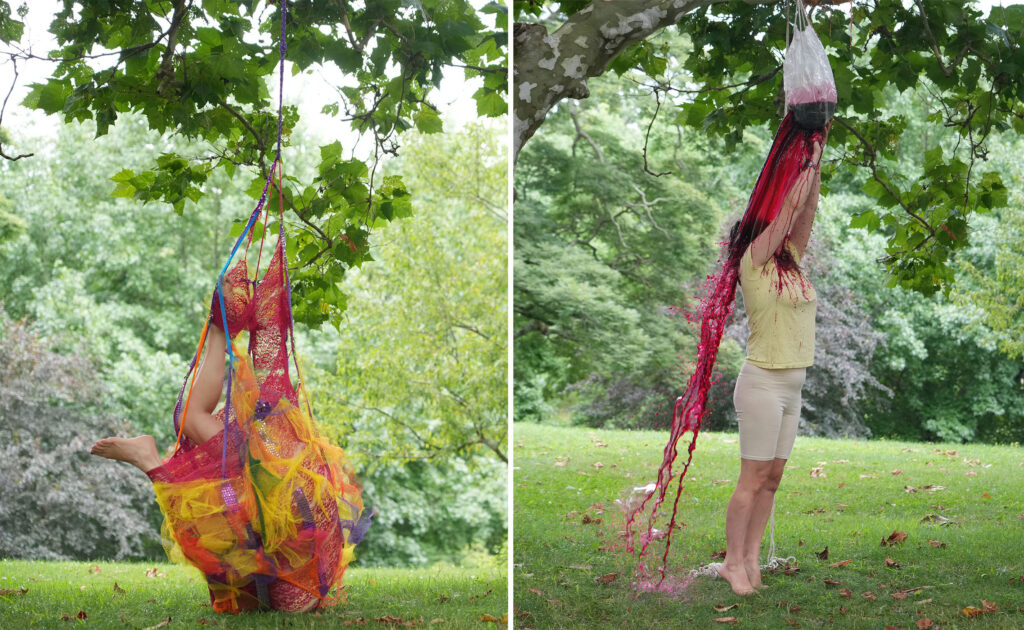
But “Fish Fry” was a community intervention, and it related to people from a much more open-ended perspective. Wanting to eat fish was the only requisite for that experience. If you saw somebody getting blood gushed on them under a tree, that’s like … a different vibe. (laughs) But if you wanted to join in to have fish, then that was more open; it was a community meal.
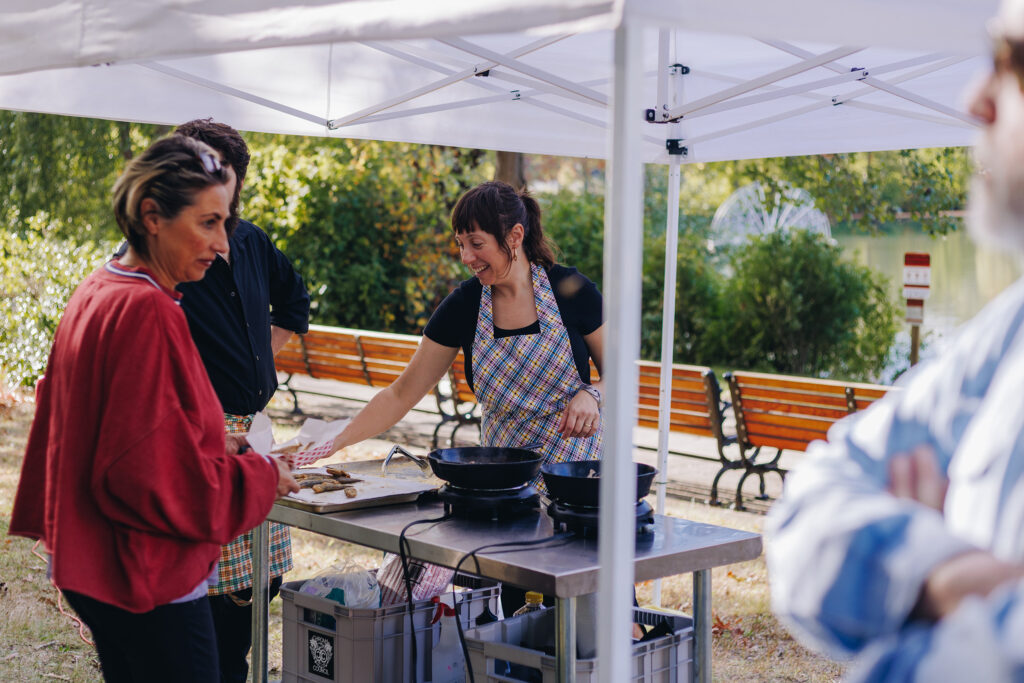
[“Safety Net”] was based on a conversation with another member of the PCL team who also grew up in Washington Park. We found we had this shared fear of swimming, and that’s another trope of lower-income urban neighborhoods — we don’t have access to swimming. So there’s this stigma around it, and I’m seeing it with my own children who live in the city and don’t swim and are afraid of it. And I remembered being in my auntie Ana’s wedding party — I was around five — and at the time, the Japanese garden didn’t have any railings on the bridges, they were just open. And I remember being afraid that I was going to fall in, but she held my hand and she said, “I won’t let you fall.” I was so little, but that memory stuck with me, and it relates back to how I grew up in this household with this extended family whom I felt held by. So I said, “How can I translate this memory into a project that relates to my current cultural landscape?” And so I sent out a call for Roger Williams Park neighbors to hold me up on a rope bridge over the water in the Japanese Garden. And eight people replied to the call and held me up. It was physically challenging, they could have fallen in the water trying to keep me out of it. The experience was a really exhilarating social experiment.

What is the significance of the materials that appear in your work?
I think I stress myself out a lot. It has been a huge privilege to work on the Commemoration Lab, but it’s a lot . We need to shift narratives and give voice to underrepresented populations, and trying to find ways to switch that narrative is so heavy. And I really wind myself up. But doing textile work is a way to escape that buzzing in my head through hand work. I find a texture that I like, whether it’s physical or visual, and I put it together. It’s time consuming, but it’s a way to just sit with a more meditative relaxing practice. And then I end up with these little objects that are coded with the ideas I’m trying to tease out. As I’m binding things, I’m trying to unbind ideas. So that leaves some sort of a charge in the material. I like to find little scraps of stuff, whether it’s a natural or manufactured material, and it might have memories associated with it. Like, if it’s a stone, it could have a memory of the physical place, or if it’s a scrap of garment … Years ago, when I first started doing interventions around the park and South Providence, I was in my early 20s, and it was the end of the time at my Vavó’s house before it was sold. Her house was filled with old scraps of my aunts’ and uncles’ lives. There were so many clothes, and I just loved using those materials, because I was able to embed memories of my family into the sculptures and installations I was making. And that has just carried on through the rest of my life, where I take little scraps of things and weave them into something else to memorialize time and space and people.
What does commemoration mean to you?
I think commemoration has maybe meant something very grand, historically. But I think in deep, deep history, it’s more related to these little scraps of clothing that maybe meant something to [someone.] I think it’s much more personal and much more holistic. And I think that we’re starting to shift towards memorializing the humanity of people rather than accolades that are based on power and destruction.
Tell us about the final installation you’re working on for your site.
“Community Reflection” is more of a formal sculpture. The performative work and interventions were deeply personal. But for this final work, I wanted to kind of take a step back and be able to create a pedestal for the community. And it’s set up in a way where you can’t help but participate, and be present with the work — you are literally being reflected in the work. So there’s no way around it; it’s forcefully inclusive. And there’s an audio component that’ll be activated on a number of occasions where the voices of community members are heard saying, “We are here.” So there’s the visual component, and then there’s this audio archive of the voices of community members. The whole project feels very sculptural; a lot of my work is more open-ended, but this is like a metal thing … a big, shiny metal thing that will be bolted into the ground. (laughs) I guess I wanted to create a formal sculpture, to challenge myself to speak in the language of monuments. Because the narrative we’re trying to shift is one of bronze statues of men who have extracted power, so I’m using that same language of hard sculpture, but having it be a literal reflection of the people who live here, to be representative of South Providence.
I wanted to create a formal sculpture, to challenge myself to speak in the language of monuments. Because the narrative we're trying to shift is one of bronze statues of men who have extracted power, so I’m using that same language of hard sculpture, but having it be a literal reflection of the people who live here, to be representative of South Providence.
Linsey Wallace
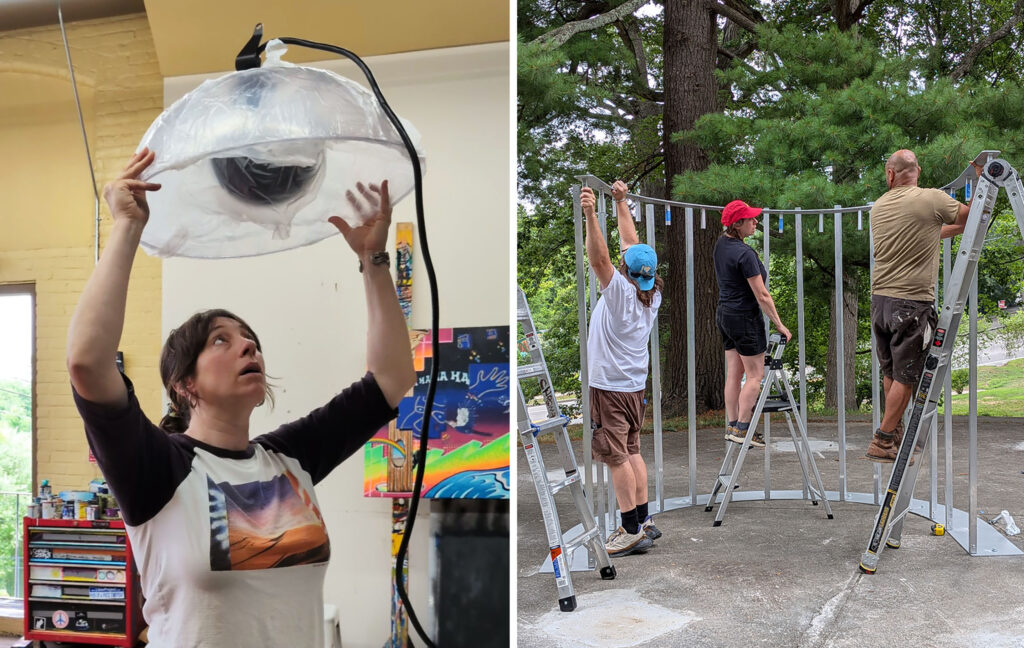
What is your relationship with Roger Williams Park?
I grew up on Washington Avenue. I would enter the park at the eagle statue. I grew up going to the park very frequently. I’ve spent the majority of my summers living in tenement buildings in Providence, and it’s hot and going to the park where there’s shade and breeze, it’s just like a real, practical need. There’s space to play. I was fortunate to have really beautiful backyards that were full of fruit and vegetables, because my mom’s family came from a farming background, and they planted so much food in such a tiny space. But if you wanted space to run around or to have a party that was larger than you could fit in your backyard … the park was really an extension of everyone’s backyard. There was more traffic that would go through the park at that time, bands would play there, it always felt very active. [Recently] I needed to measure something at my installation site. And it was getting late, it was like 8:30pm when I left my house. And I’m like, running and running and running, I’m like, “The park is gonna be all dark. I won’t be able to see anything.” And when I get there, it’s like a party is happening. People are out doing stuff, there’s music playing, there’s a moon … there’s life and activation. (laughs) I had forgotten how important park space is on hot summer nights.
Learn more about Linsey here, and follow the PCL Instagram to see more from our Studio Visit series!

